Wolves Pigs and Men (1964)
Directed by: Kinji Fukasaku
Written by: Jun'ya Satô, Kinji Fukasaku
Starring: Ken Takakura, Kin'ya Kitaôji, Sanae Nakahara, Shinjiro Ehara
Available on 19th of August from Eureka’s Masters of Cinema Series
In the world of gangster movies there are a lot of typical tropes and character archetypes; honour among thieves, rival factions in turf wars, respect within a criminal hierarchy. Kinji Fukasaku’s body of work is full of such examples, after all he’s probably best know for directing two sets of films in the ‘Battles Without Honour or Humanity’ series, aka The Yakuza Papers; a total of eight all in all. However, this earlier example is perhaps more interested in the social and economic struggles of a family. That is to say it’s tale of actual brotherhood rather than competing gang members. The result is a surprisingly bleak and brutal affair that suggests maybe blood isn’t thicker than water. Make no mistake; this isn’t any kind of sentimental melodrama.

To set the scene the movie starts out with an incredibly fiery monologue about life in the slums. The crime montage may be stylish and the jazz music has a certain kind of momentum, but anger is the overriding emotion. Life is unfair and the only way out is to make something of yourself… even if it’s by becoming a thief. You see once upon a time there were three brothers. One, the oldest, left his sick mother and reached the ranks of the Iwazaki Clan. The middle child tried to do things his own way after becoming desperate and ended up antagonising the yakuza family and doing time behind bars. The youngest was trapped looking after their mother in a filthy shack, but she isn’t going to live much longer and her death sets the events of the story in motion.
After getting out of prison Jiro (Ken Takakura) meets his younger brother Sabu (Kinja Kitaoji) and finds him carrying the coffin. He seems upset that he wasn’t told, rather than by the death itself, betraying his cold and ruthless nature. Meanwhile their elder sibling Kuroki (Rentaro Mikuni) has a similar reaction after being shown her ashes at the clan’s nightclub. Of the three he’s the most respectable, at least in appearance, but which one is a wolf, a pig, or a man, has yet to be made clear. Sabu may be living in the dirtiest part of town but the others are hardly clean, and all of them have the potential to shed their humanity in favour of violent action. Will any of them escape the dangers of such a life unscathed or will there more more deaths in the family?
Jiro soon puts a plan into action that will involve him raising funds to leave Japan while taking revenge against the gang. A heist, the robbery of cash during a drug exchange, will also involve Sabu and his unruly friends getting a cut. However, Sabu isn’t going to trust his brother who walked out so long ago. He might be full of youthful energy (in one sequence a bitter eulogy almost turns into a finger snapping West Side Story moment) but his focus on good times and partying covers up a cynical side. Things are bad in the pigsty as highlighted by a disturbing moment when he joins a stray dog hunt. Jiro might be leaving to try and forget prison but Sabu has been in one of another kind for many years.
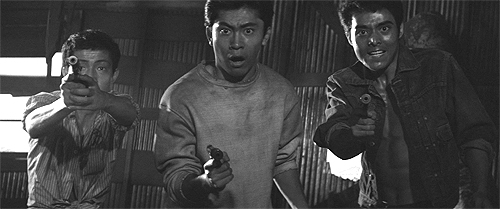
The texture and smell of filth (and blood) permeates every frame even though it’s a story told in black and white. It’s telling that Kuroki uses a handkerchief when visiting the area to investigate the robbery. It’s an incredibly run down post-war location in which open garbage dumps are often visible and corrugated steel walls hide shambling residents. In a way the lack of colour accentuates this atmosphere of death and desperation. The rush of the crime, a slick set piece with Dutch angles and flashy editing to spare, soon fades as the story becomes centred around the meeting place Sabu and Jiro arrive at afterwards. One may be younger than the other but it’s clear both have naive attitudes about how things are going to end.
The central theme of rebellion and escape is explored through this age difference. As with some of the director’s later films it’s a tale of furious resentment towards an older generation who seem complacent and are happy to use young faces to do their dirty work. Kuroki has become a real crook, one detached from his upbringing, while Jiro is still fighting to climb an imagined ladder out of his hole. Sabu drinks and sings with his friends but can never trust anyone else, which becomes a problem when things turn nasty. The third act is particularly cruel as they turn on one another and ideals of friendship and family are put to the test with intimidation and torture. Extreme defiance meets extreme measures in a gruelling third act.
It’s not entirely bleak of course but it’s a bloody affair when things go awry. The enclosed location and the repetitive nature of the aftermath can be exhausting even if that’s the whole point. After so much screaming there’s not going to be any kind of easy respite or reconciliation. It helps that the central performances are all compelling as things unravel, although Jiro’s partner in crime Mizuhara (Shinjiro Ehara) stands out just for being so ruthless in an already sadistic ensemble. His romantic partner Kyoko (Sanae Nakahara) barely makes an impression and just seems to go along with his plan but that’s one typical element in a fairly atypical movie. Ultimately it’s a stark, moody, and rage fuelled feature that is well worth seeking out. Whether you’re looking for a thriller with social, family, or criminal ingredients they’re all pretty potent.
SPECIAL FEATURES
The UK debut of this film comes along on a new restoration from Eureka. The first two-thousand copies come with the collector’s items noted below, and the disc includes a selection of interviews. It’s stylish affair and so all the noir-esque shadows look great, as does all the glistening blood, sweat, and tears. About three small moments in the film have some kind of horizontal lines present for a couple of seconds, similar to a lens flare, but it’s a minute blemish. For a film about failed attempts to leave behind a life of misery it sure looks nice on the whole.
- Limited edition O-Card slipcase featuring new artwork by Grégory Sacré (Gokaiju)
- A collector’s booklet featuring new writing by Japanese cinema expert Joe Hickinbottom
- 1080p HD presentation on Blu-ray from a restoration of the original film elements supplied by Toei
- Original Japanese audio track (uncompressed LPCM mono)
- Audio commentary track by Jasper Sharp
- Interview with screenwriter Junya Sato
- Interview with producer Tatsu Yoshida
- Interview with Kinji Fukasaku’s biographer, Sadao Yamane
- Trailer



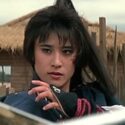
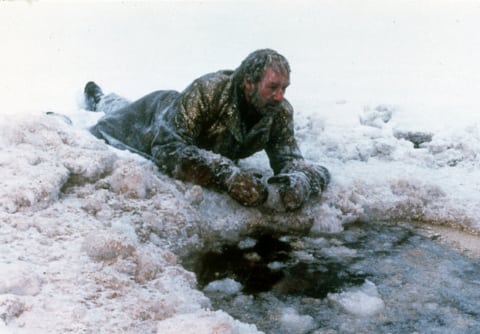
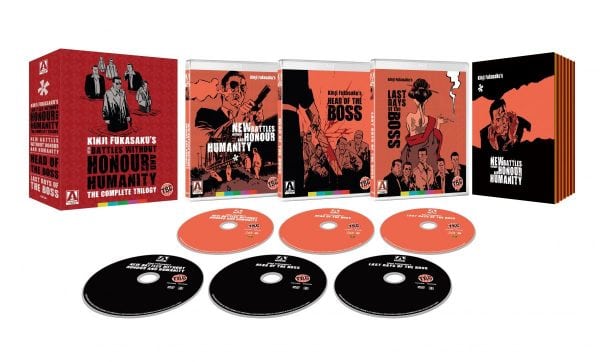
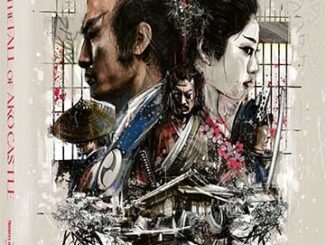
Be the first to comment